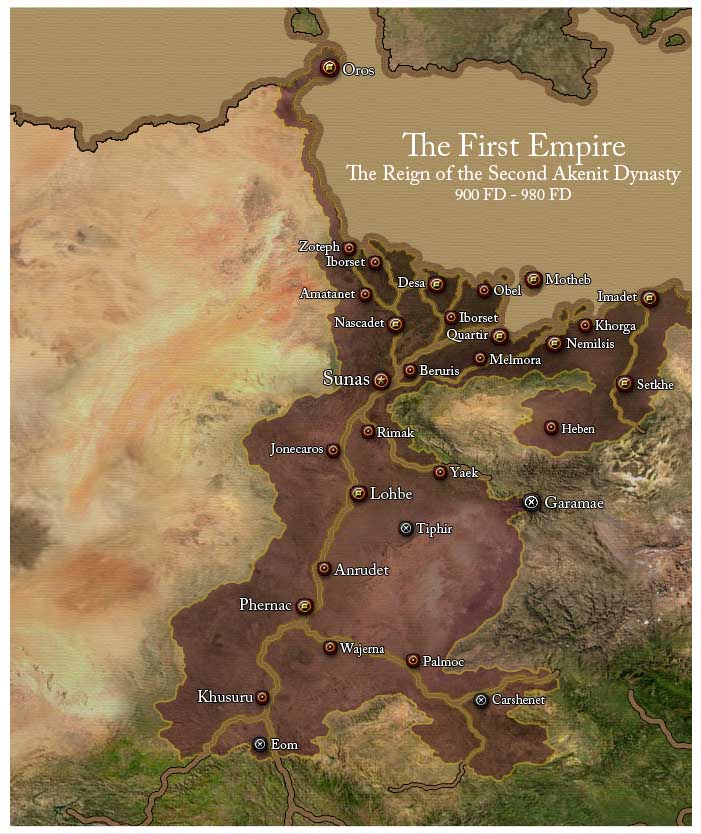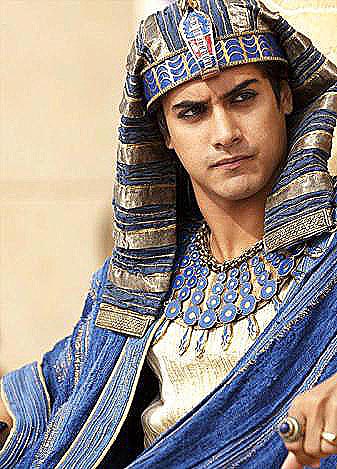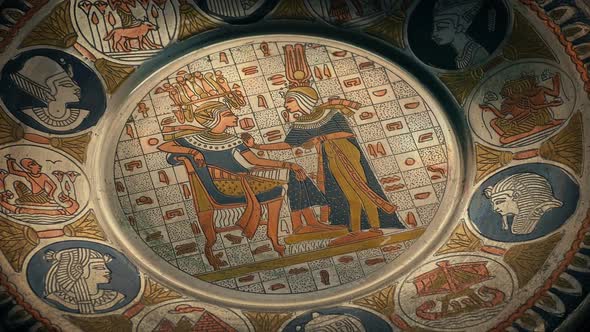The Second Akenit Dynastic Period (160 AE to 240 AE)
A Return to the Old
Formation and Rise
The Second Akenit Dynasty, arose from the ashes of their predecessor, the Camethop Dynasty, and from them inherited one of the worst economic crisis in imperial history. This economic depression, would be what won them back their throne though, as the new emperor, Asq I, rose by catering to people's desperation for a return to the prosperity of his ancestors. Upon being proclaimed emperor by the rebel faction controlling the imperial palace, Asq quickly won over the many other factions vying for authority in Sunas, by making spectacular promises of a renewed golden age.Expansion and/or Reform
Purged from the city by the vengeful mobs, the military clique that had overseen the empire after Faphek's murder had lost much of its leadership, and without it were left in shambles across the empire as a whole. For this reason, Asq faced little challenge from the former imperial military who had previously opposed him, but he also lacked the backing of any true armed force. To solve this dilemma, the new emperor lifted the conscription policy of the Camethops, and offered amnesty to the rag tag bands of surviving soldiers, in exchange for demobilizing, and disarming. In turn he used the equipment from the disarming to arm and organizing the various rebel factions, into a structured, but temporary militia. Economically, Asq faced a larger crisis though. The treasury was quite simply, empty. Drained to the last coin by the military clique, little remained for the floundering empire to rely on, and without wealth, administrators and soldiers could not be paid. To solve this, Asq decided an immediate source of wealth needed to be found, and find it he did, since after all where there is corruption, there are both rich and poor participants. Made wealthy by their involvement in draining the imperial treasury, countless bureaucrats and administrators had long since abandoned the duties of their job, and partook in embezzlement and theft. Targeting these individuals, Asq went to war against the corrupt, and where he offered the former armies of the empire amnesty, he gave none to the elite bureaucratic families that had fattened their fortunes at the state's expense. Making embezzlement, and theft among the bureaucracy punishable by death, Asq was able to seriously quell the rampant corruption present by catching, and executing the ringleaders responsible for looting the treasury over the past decade. In so doing though, the new emperor infuriated the bureaucratic noble families, who's members he targeted; but their opinion soon lost any importance when Asq tightened laws to let him target them as well. Arresting and eliminating these enemies, Asq oversaw the liquidation of their property, and restored a vast sum of wealth to imperial control. The loss of so many bureaucrats would hurt the empire severely in the years to come though, especially with so many new, and yet unconsolidated territories within it. Upper Sunar remained a poorly managed nightmare, with corruption running especially rampant there; even worse, however, were the territories of Nebtka under Sunarian control. Lacking the military might to even garrison the newest addition to the empire, local warlords had risen up, and begun declaring their independence. Both unable and like his Akenit predecessors, unwilling, to get involved in the foreign world of Nebtkan politics, Asq made the decision to withdraw out of Nebtka entirely, abandoning any gains made by the Camethops within only a few days of taking power. The administrative crisis of Upper Sunar would be a tougher dilemma to solve, since after thirty years of rule, many people in the country legitimately wished to remain within a newly forged empire. Many in the north also still existed in support of that initial campaign of Came, seeing it alone as a reasonable expansion to include the Sunarian cities of the south. Unable to just desert these gains, Asq was ultimately forced to manage the vast region, and began this duty, by instituting several new laws that were clear attempts at stamping out the black stain of organized crime. Arresting, and exterminating known ringleaders, alongside entire branches of these criminal groups, Asq's tactic was as effective as it was brutal, and within a year of his rise to power the situation was already improving drastically. The major problem of the south still lingered though. No Camethop emperor had ever made the decision of how the new acquisition in the south would be managed, instead a sort of corrupt, and inefficient military government had been established before collapsing with the restoration of Akenit rule. In their place, like in Nebtka, local warlords had begun to appear, declaring themselves, boastfully, a sort of soon to be magistrate; their belief disrespectfully being that Asq would take the simple solution of promoting local leaders to rule over the south. This would not be the case at all though, and backed by a northern dominated militia army, Asq marched south, and installed a new bureaucratic provisional government over the cities of the south. This government would be temporary though, and gradually over the next decade of his reign, Asq would appoint tried and trusted administrators to the postings of magistrate. These individuals were more often then not, veteran and northern members of the imperial bureaucracy, who proven innocent of the corruption of the previous regime, were now being rewarded for years of loyalty. With postings like these, and other major expansions of the bureaucratic system, Asq created thousands of new jobs to help reignite the workforce. To support this system, he also made a serious attempt to educate these new imperial employees, by opening numerous imperial schools, where management and literacy as well as mathematics were taught. These studies would at first be permitted to any individual displaying merit, but after Asq's death, quickly became a form of private schooling for the elite dynasties of the bureaucracy, as administrators successfully got Uphet I to pass legislation preventing the acceptance of commoners into the institutes. Despite this clear attempt by the bureaucratic families to isolate themselves from the common masses, the institutes remained a positive addition to the empire, and ensured an educated demographic managed government for most of the Sunar's history to come. Asq's attention was not limited exclusively to fighting corruption though, he would also try incredibly hard to present the artistic splendor and glory of the empire's lost eminence. To do this, he would create the Ministry of Sunarian Culture within the Imperial Bureaucracy, and hire artists on a scale hither to unseen in Sunar, to run it, and restore artistic beauty to the Sunarian Empire. Tarnished by thirty years of censorship under the tyranny of the Camethop Dynasty, iconography and art depicting many of the First Dynasty, had been scratched out and destroyed. For this reason, it would be one of Asq's many goals to restore these pieces of art, and portray his ancestors in the prestigious light he believed was warranted to them. Ultimately successful in this endeavor, Asq's efforts reignited an age of art and beauty, and have as a result given historians an inkling into the reign of the First Akenit Dynasty, even if it is through the biased lens of their descendant. Beyond restoring old artwork though, Asq's legion of artists also produced a countless number of original pieces, that together far outmatched the restorations. This age of art would ultimately be the Second Akenit Dynasty's true legacy, for where their other efforts came to an end with the fall of the First Empire, much of their art survives in all of its splendor, to this very day. The Ministry of Sunarian Culture would disappear following the collapse of the First Empire, not reappearing until the formation of the Fourth Sunarian Empire, in 1189 SD.Hegemony and/or Stagnation
Asq's reign would by his death in 917 FD, be a divisive one. His war on corruption, would become never ending crusade throughout his life and with his militia gradually dissolving as he reformed a professional military, rule of law was once again returned to the empire Even the economy would recover somewhat in the decades after the restoration of Akenit rule, however, it would never truly prosper into a golden age again. Its momentum lost, prosperity as seen under the First Akenit Dynasty, was gone, and no matter how hard he tried Asq was unable to restore it as he had promised. Beginning in 915 FD, scandal and shame would shake the imperial dynasty when Asq's son, and chosen successor, Dernati was exposed embezzling from the proceeds of imperial tariffs. Having been given a prominent role in the administration it had been Asq's desire for his son to carry on his economic reforms in hopes of one day truly rebuilding the prosperity of their ancestors, and he had initially preformed excellently in such a role. Organizing a massive, and lucrative trade mission westwards, Dernati himself led the expedition to the tropical land of Zanzilore, and negotiated a highly beneficial agreement that opened Zanzilori ports to Sunarian merchants for the first time in history. It would be this system that the capable prince exploited to embezzle a vast sum from the tariffs and taxes imposed on said trade. Humiliated by the betrayal of his son falling to corruption, while he himself denounced it fiercely, Asq disinherited the young prince, and sentenced him to exile abroad to set an example. Dernati would die not long after though, murdered on the border lands of Nebtka by unknown parties. Rumors would sweep the empire that Asq had orchestrated Dernati's death, and the remainder of his reign would be blackened by the possibility that father had murdered son. With his favorite child and chosen heir removed, Asq quickly attempted to elevate his second son Uphet to be ready to succeed him, but there was simply too little time left, and only two years after Dernati's death, Asq passed away. Inheriting the greatest empire on earth, Uphet was simply unready, and unprepared for the duty. Unlike his father, he was neither administratively minded, nor a hardliner of the anti corruption crusade; furthermore, only seventeen, he had been but an infant when his father became emperor, and so unlike many within the empire, he lacked the memory of the disorder and chaos corruption had once wrought. Showing leniency, Uphet's reign would achieve its lowest point, when around 923 FD, he enacted a decree that would lift the bar, put in place by Akenit I, on magistrates passing their position down onto dynastic heirs. Whether it was from corruption, or simply laziness and refusal to bother with the job of appointing new magistrates, Uphet's decision allowed the provinces to become a hereditary possession of certain families for the remainder of the First Empire, and in so doing, gave these regional dynasties the ability to entrench themselves in their provincial holdings. A direct result of this would be the widespread separatist movement that erupted at the onset of the Second Intermediate Period, when noble families, governing over imperial provinces, broke away from the empire, and attempted to found their own states, or seize the imperial throne.Collapse
Later emperors of the Second Akenit Dynasty, would like Uphet carry on this downward trend, where the economy while stable, slowly over time grew worse and worse. Of these rulers, Uphet would rule the longest, with his reign lasting from 917 FD, to 946 FD, upon which three of his descendants would succeed him in turn. None would display even an inkling of their grandfather's economic or stability minded ambitions, and so by 978 FD, the empire was once more standing on a cliff overlooking a disaster worse than any yet seen. The death blow that would knock the First Sunarian Empire off that cliff to its death, would be the arrival of Rot Fungus in the Sun Delta. Initially from the tropical land of Zanzilore, Rot Fungus, unlike any disease that had hit Sunar before, was in reality a carnivorous fungal organism, that attached itself to any sort of life in search of nutrients. Arriving in Sunar within an infested shipment of grain, the Sun Delta would prove an ideal climate for the fungus to spread, and it would spread unbelievably fast. Overwhelming the rural communities first, Rot Fungus would always find a way of infesting more and more people. Swept up by the wind, spores of the fungus were deposited across Lower Sunar, in countless number, creating vast toxic clouds that infected anyone unlucky enough to be caught in the open.Affecting its first urban centers by around 980 FD, Rot Fungus would drift over the walls of even Sunas, and lay waste to the city's population. Unprepared for death on such a horrific scale the final Akenit emperor, Uphet II, would even fall prey to its carnivorous spread, with every single one of his sons and nephews being consumed by the Rot's ever spreading growth. Finding in the lush, decadent gardens of the First Imperial Palace a humid, and wet place to spread, the fungus would overtake any effort to contain it. Before the years end Uphet II would die alone in his bed, abandoned in the deserted halls of his palace; his family dead or gone, and his servants having fled the moment the first signs of infestation besmirched his regal body. The First Empire would come to an end as a result of the Rot Fungus Crisis, and in its wake so began the Second Intermediate Period. Unable to replace their last emperor, a power struggle would erupt in the drier lands of Upper Sunar where the fungus had failed to take hold. Fought between the imperial military's surviving commanders and the local magistrates, the empire as a whole, devolved into a mess of chaos and feuding warlords; all fighting to replace Uphet II as the next emperor of the surviving fragments of the empire. As these remnants of imperial authority fought in the drier, arid regions of the south, the Sun Delta fell into anarchy. Lacking food, order, leadership or even hope, most cities began to die slow, agonizing death under clouds of fungal spores. None of these self styled heirs to the empire would ever restore the Sunarian Empire though, instead something new was about to rise from the south, and establish a new order out of the ashes of the First Empire and the chaos of the Second Intermediate Period.History of Sunar
The First Empire
The Second Akenit Dynastic Period
Years Active
160 AE to 240 AE(80 Years)Capital
Sunas, Lower Sunar, Sun DeltaSuccessor Period
The Second Intermediate PeriodPredecessor Period
The Camethop Dynastic PeriodThe Cult of the Ancestors
One interesting cultural aspect that arose from Uphet's reign, was a idolization of the First Akenit Dynasty. Unable to actually restore the greatness, it seems that Sunarians in this time entered into a mindset of inferiority to their more prosperous ancestors. So great would this awe be, that the old emperors would be dug back up, and removed from their tombs, for no other purpose than to be displayed. On more than one occasion Uphet himself would parade the sarcophagus, and body, of the First Emperor through the halls of the palace during festivities as a sort of entertainment for his guests. Worshiped akin to, but not as, deities or gods, these bodies, were perceived as relics, or artifacts of the utmost prestige and respect. Owned solely by Uphet, the bodies of his ancestors and long dead relatives were frequently gifted out to his friends and allies; and as a result of this, most today are missing or destroyed. The body of Akenit I, the First Emperor, would be one such case, disappearing from historical record after it was stolen during the Second Intermediate Period.Military System
Suffering from economic ruin at the start of their rule, the Second Akenit Dynasty was forced to limit their military spending and as a result the empire's armed forces saw a massive reduction in scale and expenditure. For several years early on, so severe would this reduction be, that the armed forces of Sunar became a militia, managed by rebel leaders who had overthrown the former Camethop emperor, Faphek I. These militia bands, were in truth glorified mobs, that while numerous lacked any sort of discipline or equipment. Utilized for their ferocity by Emperor Asq I, these mobs would be used to wipe the corrupted slate clean, before being phased out and replaced by a professional fighting force.This new fighting force would be a far cry from the powerful and vast army of Asq's predecessors, but it did succeed in saving the empire a fortune in expenses, and served well as a garrisoning and defensive force, meant to maintain order and security within imperial borders. In regards to equipment, very little changed during the rule of the Second Akenit Dynasty, to differentiate it from the two previous imperial dynasties. A plate dating back to the Second Akenit dynastic period. Displays the style of artwork that made their age a golden one of the arts. The route taken by Dernati to reach the tropical land of Zanzilore around 913 FD.Remove these ads. Join the Worldbuilders Guild














Comments